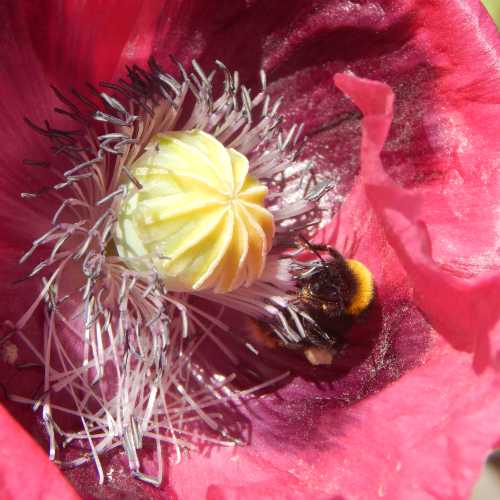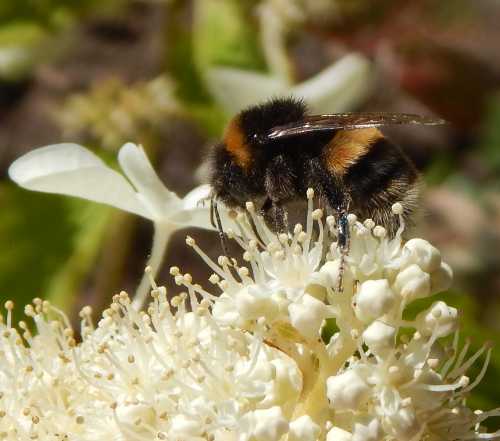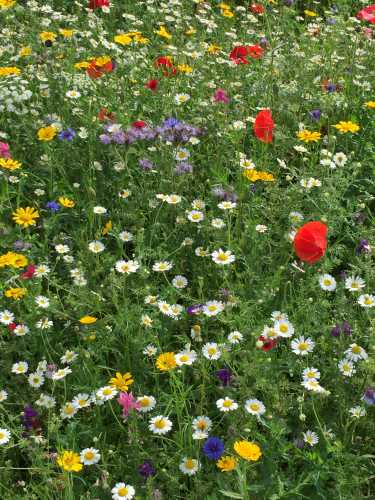10 Tips To Help You Create A Bee Garden
Updated: 26th April 2021
Here are my top tips for creating a bee garden. There are links to further information within this page such as lists of great bee plants, trees for bees, the role of native garden plants and wildflowers (please note, clicking these links opens a new window in each case). Read on!
10 Tips To Help You Create A Bee Garden
1. Provide year-round pollen & nectar rich flowering plants
Individual bee species emerge at different times of the year. It's a good idea to include a few winter flowering shrubs and plants in your border or pots if you can, and also to ensure you have a flower season that lasts late into the autumn for species such as Bombus pascuorum.
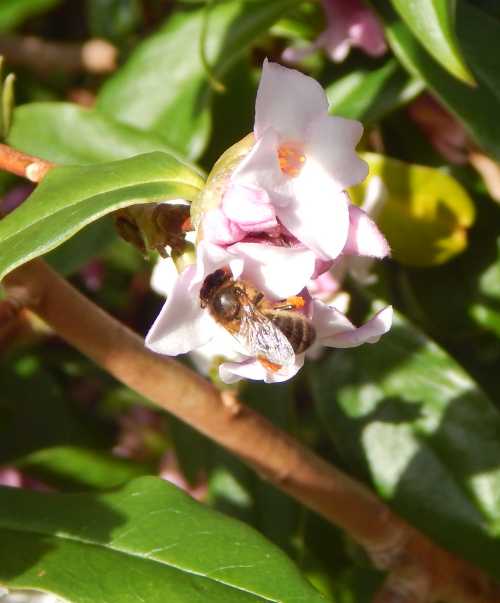 Honey bee worker foraging on a Daphne Jaqueline Postill flower, an early flowering shrub with heavenly fragrance.
Honey bee worker foraging on a Daphne Jaqueline Postill flower, an early flowering shrub with heavenly fragrance.See this calendarized list of plants for bees for more ideas.
2. Avoid highly cultivated ornamental plants
Good
bee plants provide excellent sources of nectar or pollen – and even
better if they provide both.
For this reason, some highly cultivated ornamental plants are not necessarily very useful for bees, primarily because they contain little of these important bee foods. Nectar provides energy, and pollen is an important source of protein.
Plants such as Impatiens (Bizzy Lizzie), and highly cultivated begonias offer little value.
3. If possible, plant in swathes
Ideally, when you are creating a bee garden, you should position your bee plants in groups. Swathes of butterfly and bee attracting plants are easier for our little pollinators to locate. Importantly, it also conserves vital energy stores, meaning more nectar and pollen can be returned to the colony.
4. Include flowering shrubs
There are so many options available, whether you are seeking something to small and compact or large and architectural. See this list of shrubs for bees.
5. Include wildflowers
A bee garden should ideally include at least a few wildflowers in the border. Here is a list of wildflowers for bees. Or if you have space, then why not create a wildflower area?
6. Flowers in the lawn
Instead of attempting to convert a lawn into a wildflower area with lots of tall varieties of plants, a good compromise is to allow clover to flourish,
and to leave a few smaller wild flowers to pop up here and there, such as bird’s foot
trefoil, self heal and vetches in patches. These plants are so pretty,
and are excellent plants for bees. My personal preference is for clover in lawns, because it's pretty and it remains green even during very dry periods. It is also good for the soil, and later in the year, when mown, makes a good addition to the compost.
An alternative way of creating a flowering lawn is to fill it with a ground covering herb, such as thyme, which is an excellent bee plant. See lawns for bees for more ideas.
7. Include different flower shapes in your flower borders
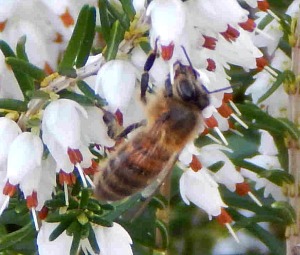
Different bees are attracted to different flowers, so a good bee garden should include a variety. Some bees can manage plants with tubular florets, such as foxgloves, whilst others prefer more open varieties.
Remember to include a range
of flowering plants with different shaped florets. Read more about different flower shapes in your flower borders.
8. Water and mud!
Bees need water for drinking whilst some bee species, such as mason bees, use mud for constructing their nests.
9. Include cottage garden flowers, edible crop plants and herbs
A
cottage garden is usually a good bee garden. Cottage garden plants
never go out of fashion. Humans love them, and bees love them too, and
better still, a typical cottage garden border is full of great plants
that attract butterflies and bees.
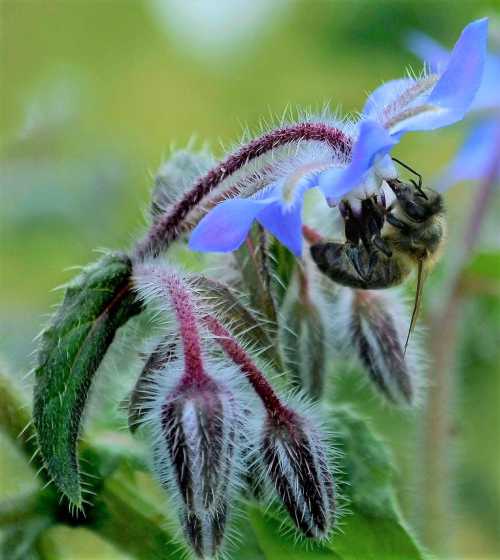 Bumble bee on borage
Bumble bee on borageMany herbs are
excellent bee plants, and of course, are enjoyed by humans. Rosemary
provides a useful source of nectar during the winter, borage oozes
nectar in the summer.
Marjoram, chives, lemon balm and so many herbs are great plants for bees and butterflies – do take a look at my section about herb plants for bees.
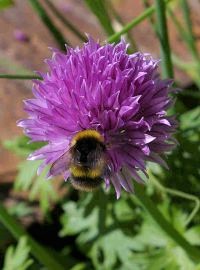 Bumble bee on chives
Bumble bee on chives
A bee garden can include home grown produce too. After cropping, some brassicas such as kale, can be left to flower, and the flowers are very attractive to pollinators.
10. Plant vertically to maximise space
Climbing plants can help to fill a small garden with flowers. Jasmine, honey suckle and passion flower are excellent options, depending on support. Some climbing roses can also be useful, along with wisteria and laburnum.
Small gardens, with a little thought, can provide tremendous value to bees and other pollinators. My garden is small, but the space is well-used. I have visits from honey bees, and a variety of bumble bees. Mason bees and leafcutters nest in my solitary bees houses. less well-known species such as chocolate mining bees, wool carders and hairy footed flower bees also visit this small space, thanks to careful planting.
